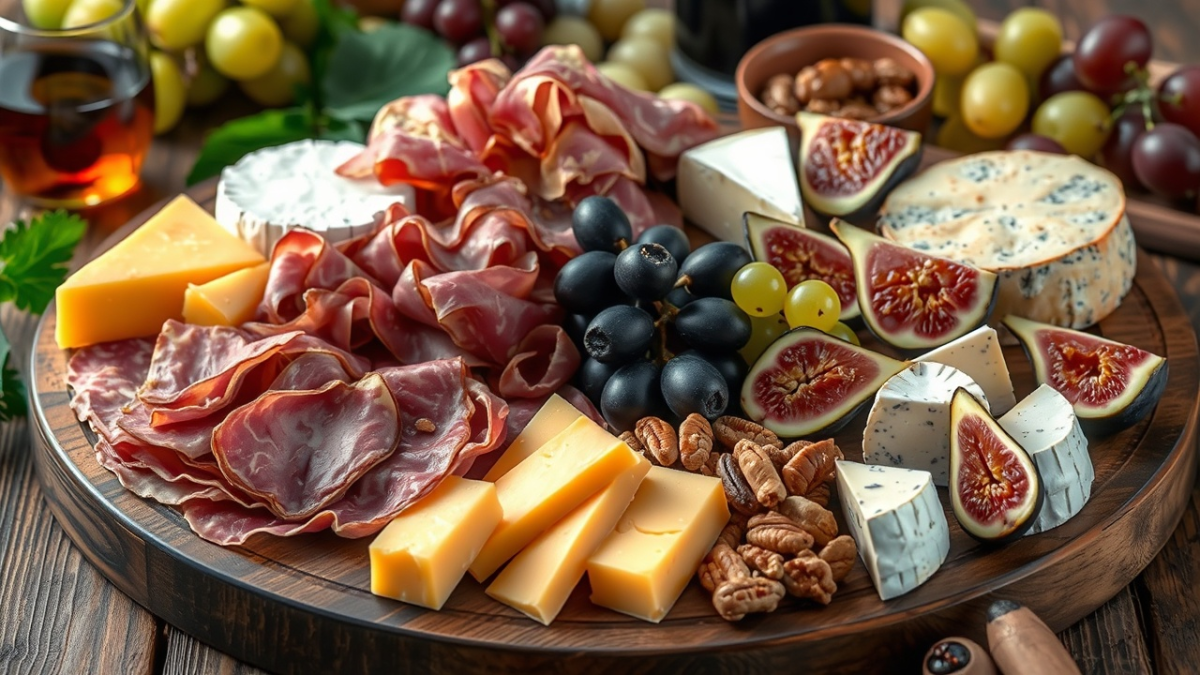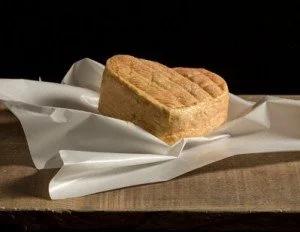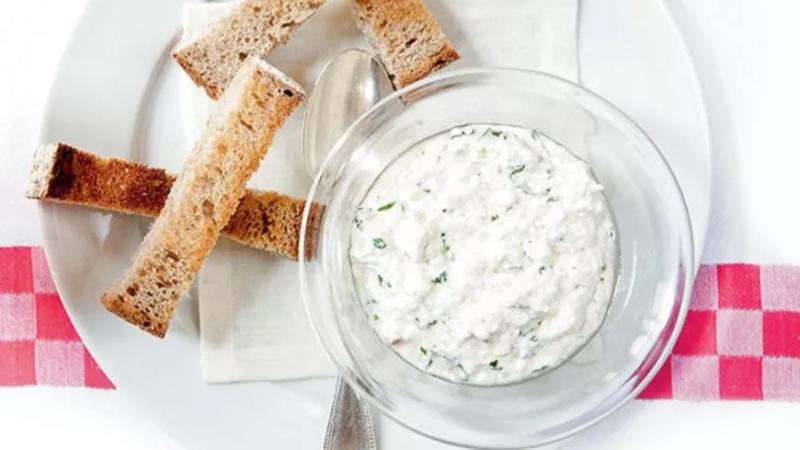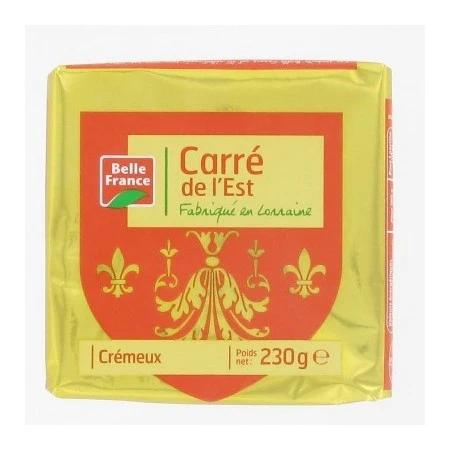Crafting the perfect charcuterie plate is an art form that combines visual appeal with a delightful taste experience. One of the key elements to achieving this is selecting the right cheese pairings. A well-curated cheese selection not only enhances the visual appeal of your platter but also elevates the overall dining experience. Understanding the different types of cheeses and how they pair with other ingredients is crucial for creating a delightful charcuterie board.
Let me tell you what happened to me one day when I was hosting a fancy dinner party for my friends. I had spent hours meticulously arranging the perfect charcuterie plate, complete with an assortment of gourmet cheeses, cured meats, and elegant accompaniments. The table was set, the candles were lit, and the mood was just right.
As my guests arrived, they oohed and aahed over the beautiful spread. Everyone was impressed, especially my friend Sarah, who is known for her discerning taste. She took a bite of the brie paired with prosciutto and declared, "This is divine!"
Just as everyone was settling in and enjoying the charcuterie, my mischievous cat, Victor, decided to make an appearance. Victor has always had a knack for stealing the spotlight, and tonight was no exception. He jumped onto the table, knocking over a bowl of olives and sending them rolling across the floor.
In the commotion, Victor spotted the charcuterie plate and, with a swift paw, snagged a piece of the expensive aged cheddar. Before anyone could react, he leaped off the table and dashed away, cheese in mouth.
My guests were in stitches, laughing at the unexpected turn of events. I, on the other hand, was torn between laughter and mild panic. Sarah, ever the optimist, chimes in, "Well, at least we know Victor has good taste!"
Determined to salvage the evening, I quickly rearranged the remaining cheeses and meats, filling in the gaps with extra nuts and fruits. The dinner party continued, and despite the feline interruption, everyone agreed it was one of the most memorable evenings they've had in a long time.
As the night wound down, I found Victor contentedly napping in the corner, a small piece of cheese still clinging to his whiskers. I couldn't help but smile, realizing that even the best-laid plans can be improved with a touch of unexpected chaos.
From that day forward, every charcuterie plate I create includes a small "Victor's Choice" section, featuring a bite-sized piece of cheese just for him. After all, he's become an integral part of my charcuterie tradition!
Soft Cheeses: Creamy Delights
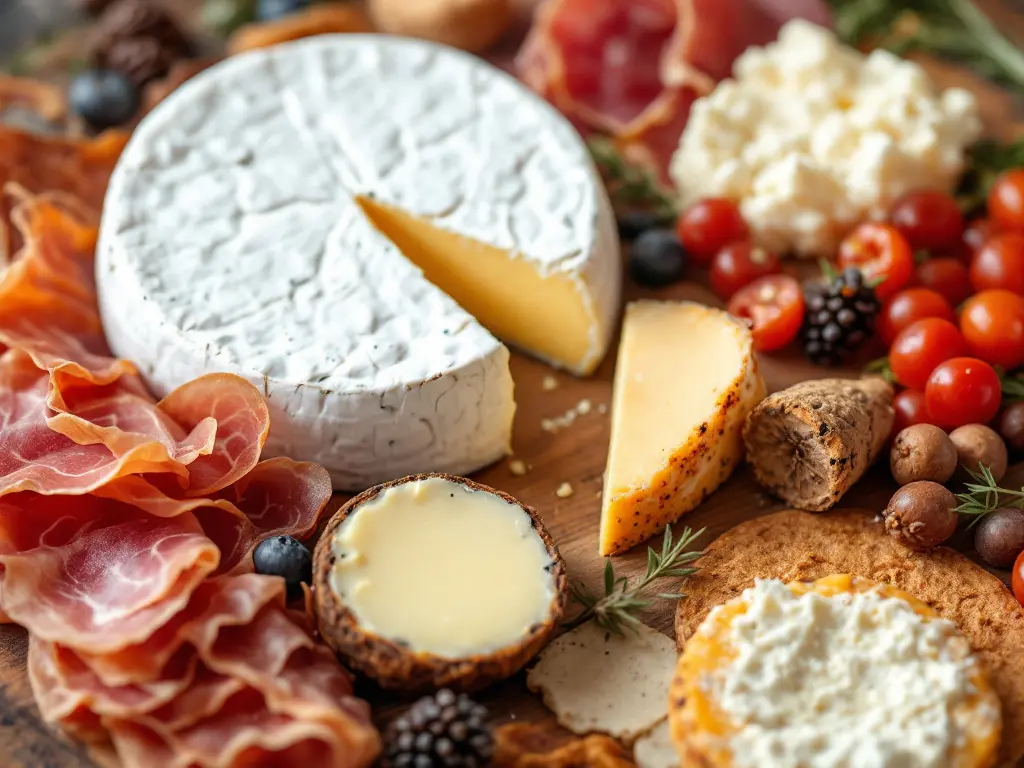
A charcuterie plate featuring soft cheeses like brie, camembert, and goat cheese.
Soft cheeses are particularly popular in charcuterie arrangements. These creamy delights, such as brie, camembert, or goat cheese, offer a rich texture that contrasts beautifully with cured meats and crunchy accompaniments. When exploring soft cheese combinations for charcuterie plate, consider adding a tangy goat cheese paired with honey or fruit preserves. The explosion of flavors will surely impress your guests and add a touch of sophistication to your board.
Semi-Hard and Hard Cheeses: Bold Flavors
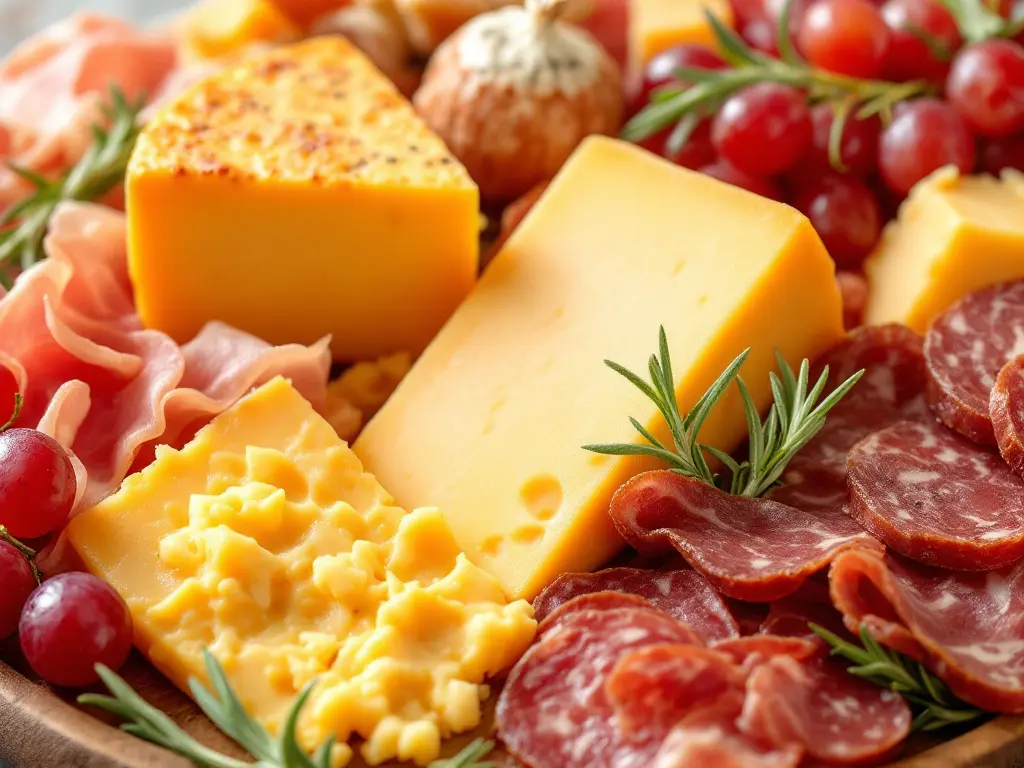
A charcuterie plate featuring semi-hard and hard cheeses like aged cheddar and gouda.
In addition to soft cheeses, incorporating semi-hard and hard cheeses like aged cheddar or gouda can provide a wonderful balance. These cheeses typically have a firmer texture and bolder flavors, which can complement the richness of the soft cheeses. When arranging your charcuterie plate, alternating between soft, semi-hard, and hard cheeses will create an appealing mosaic that encourages tasting and exploration.
Flavored Cheeses: Exciting Profiles
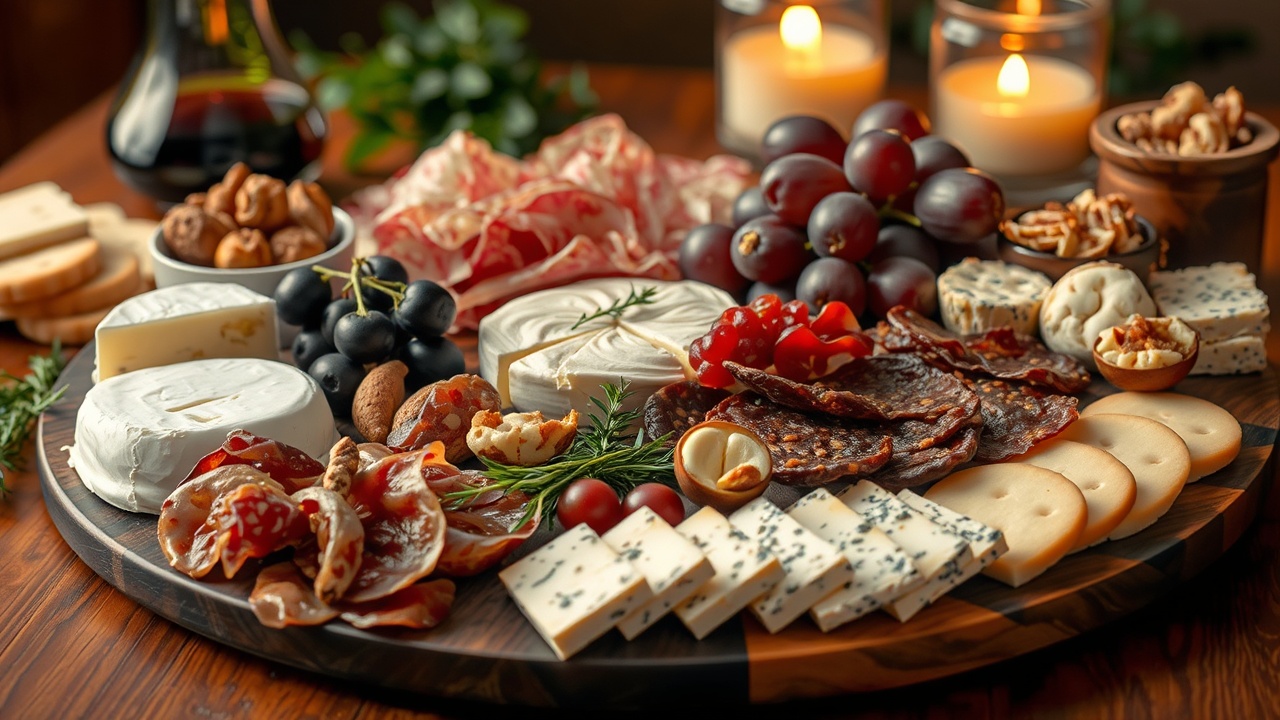
A charcuterie plate featuring flavored cheeses like herbed or pepper-infused varieties.
Finally, don’t forget to include some flavored cheeses, like herbed or pepper-infused varieties. These can introduce exciting flavor profiles that can spark conversations and provide a delightful surprise for your guests. Experimenting with different cheese types allows you to curate a unique charcuterie experience that caters to various palates while ensuring every bite is a celebration of flavors.
Classic Cheese and Meat Combinations
One popular pairing is the rich and creamy brie with prosciutto. The soft, buttery texture of the brie complements the salty, savory notes of the prosciutto perfectly. Together, they offer an indulgent experience that is hard to resist. This combination is among the best soft cheese combinations for charcuterie plate enthusiasts, showcasing how a soft cheese can beautifully enhance the flavors of cured meats.
Another classic option is sharp cheddar alongside smoked sausage. The robust flavor of aged cheddar cuts through the smoky richness of the sausage, creating a delightful contrast. This balance of flavors appeals to those who enjoy a bit more bite in their charcuterie creations. Pairing earthy cheeses like aged gouda with spicy salami also brings a unique dynamic that tantalizes the palate.
Don’t forget about blue cheese, which offers a bold alternative to typical cheese pairings. It pairs exceptionally well with bresaola, an air-dried, salted beef that is both robust and savory. The tangy complexity of blue cheese enhances the flavors of the bresaola, making it a standout combination on any charcuterie board. Embracing these classic soft cheese combinations for charcuterie plates will surely impress your guests and take your culinary skills to the next level.
Adding Flavor with Accompaniments
When it comes to crafting the perfect charcuterie plate, the right accompaniments can elevate your selections to new heights. Adding flavor and variety, the choice of accompaniments is essential to create a balanced and enjoyable experience for your guests. Think about textures, tastes, and colors—these elements all play significant roles in the overall presentation and enjoyment of your platter.
Start by considering fruits, both fresh and dried, which can add a vibrant touch. Fresh figs, grapes, and apple slices pair wonderfully with soft cheese combinations for charcuterie plate. The natural sweetness of the fruit will complement the creamy texture of the cheese, making each bite a delightful contrast. Dried apricots and cherries contribute a chewy texture that harmonizes beautifully with the rich flavors of different cheeses.
Nuts also make for an excellent accompaniment. Walnuts, almonds, and pistachios not only provide crunch but also add earthy flavors that can balance the creaminess of the soft cheeses. A sprinkle of honey or a drizzle of balsamic glaze can further enhance the tasting experience, providing a touch of sweetness and acidity that ties everything together.
Don’t forget about savory elements such as olives, pickles, or even a medley of marinated vegetables. These salty bites can cut through the richness of the cheese, offering a contrast that keeps your taste buds engaged. With careful selection and balance of these accompaniments, your charcuterie plate will not only look stunning but will also be a memorable experience for every palate.
Arranging Your Charcuterie Plate Beautifully
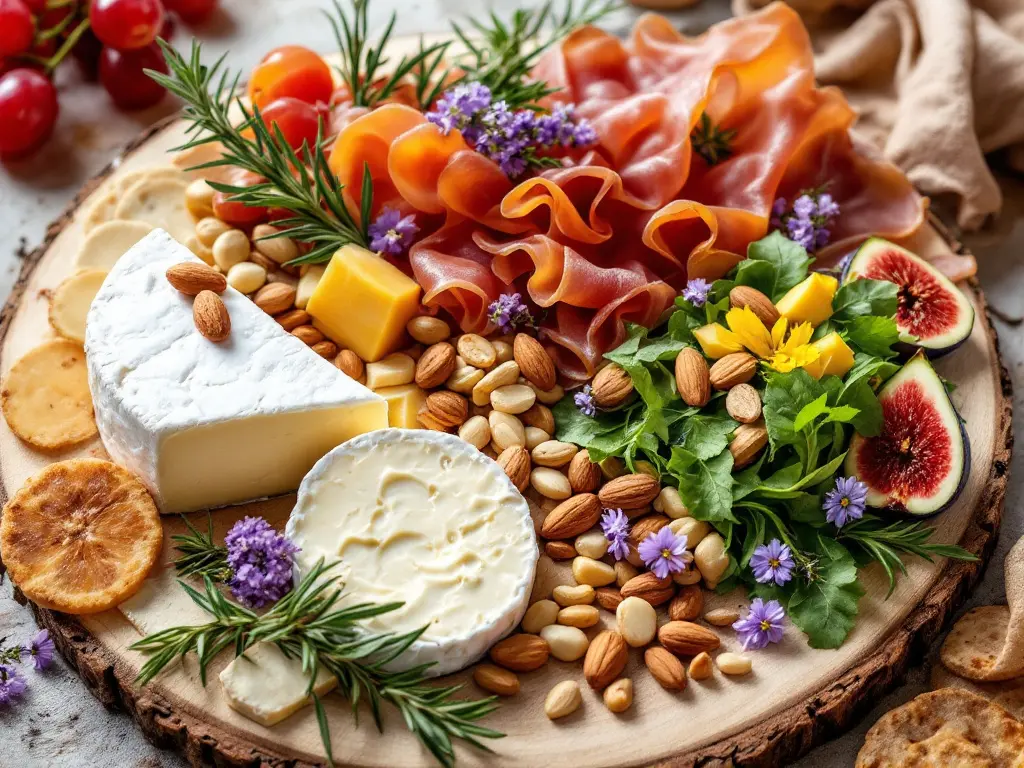
A beautifully arranged charcuterie plate featuring a variety of cheese pairings, cured meats, fruits, nuts, and accompaniments.
Creating a visually appealing charcuterie plate is just as important as selecting the perfect cheese pairings. A well-arranged plate not only tempts the eyes but also sets the tone for an enjoyable dining experience. Start by choosing a large wooden board or a sleek slate platter to serve as the base. This neutral backdrop will allow the colors and textures of your ingredients to shine.
When arranging your components, consider the balance of colors and shapes. Place your cheeses first, allowing their varied textures and hues to dictate the layout. Soft cheeses, like brie or camembert, can be placed in the center, while firmer cheeses, such as aged cheddar or gouda, can flank them. Keep in mind that soft cheese combinations for charcuterie plate create a lovely contrast with harder cheeses, enhancing visual appeal and flavor complexity.
After positioning your cheeses, fill in the gaps with cured meats, fruits, and nuts. Roll up slices of prosciutto or salami for added height and interest. Fresh fruits, like grapes or figs, bring a pop of color and sweetness, while nuts add crunch and texture. Don't forget to incorporate small bowls of honey or chutney, which not only complement your cheese selections but also create a rustic, inviting presentation.
As you arrange your plate, strive for variety in both flavors and textures. This will encourage guests to indulge in a delightful tasting experience as they mix and match different ingredients. By thoughtfully layering and arranging your food, you’ll create a stunning charcuterie plate that showcases delicious cheese pairings and leaves a lasting impression.
Conclusion
Crafting the perfect charcuterie plate involves selecting the right cheese pairings, incorporating flavorful accompaniments, and arranging everything beautifully. By understanding the different types of cheeses and how they pair with other ingredients, you can create a visually appealing and delicious platter that will impress your guests. Don’t forget to include a variety of cured meats, fruits, nuts, and savory elements to enhance the overall experience. With careful selection and arrangement, your charcuterie plate will be a memorable centerpiece for any gathering.
References
- Cheese.com - A comprehensive guide to different types of cheeses and their pairings.
- Food Network - Recipes and tips for creating the perfect charcuterie plate.
- Bon Appétit - Expert advice on cheese and meat pairings for charcuterie boards.
- Epicurious - Delicious charcuterie ideas and accompaniment suggestions.
- Serious Eats - In-depth articles on the art of charcuterie and cheese pairings.
By following these guidelines and incorporating the tips and products mentioned, you can create a charcuterie plate that is not only visually stunning but also a delight for the taste buds. Happy entertaining!
